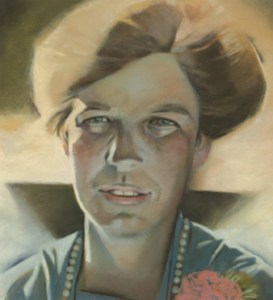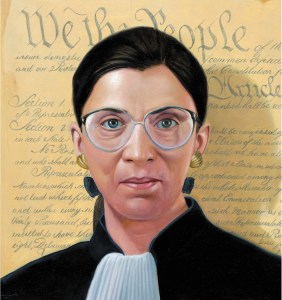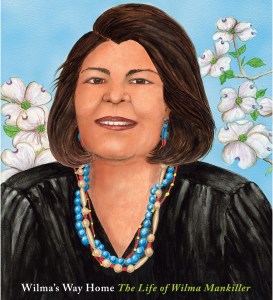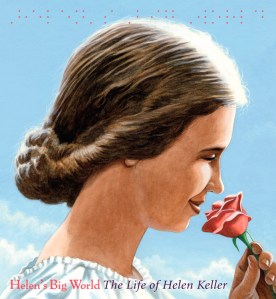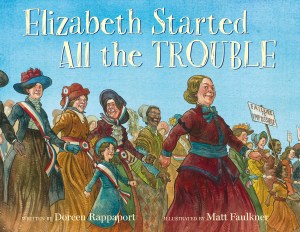Doreen Rappaport on Writing Historical Figures
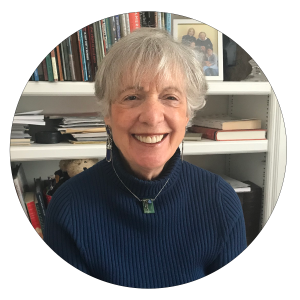
I grew up in the nineteen-fifties, an era in which society did not believe women had the same intellectual abilities as men, nor the same desire to achieve outside their roles as wife and mother. I can still hear the neighbors warning my mother that I was “too smart for my own good,” i.e., that no man would want to marry me.
I was an avid reader, always in the library, but couldn’t find many books there about women, aside from Eleanor Roosevelt, Amelia Earhart, and Jane Addams. There were many books about the Founding Fathers but none about women leaders such as Judith Sargeant Murray, Elizabeth Cady Stanton, and Ida B. Wells. Nor were there books about women pilots, lawyers, doctors, teachers, writers, artists, or revolutionaries. Books about the struggles and achievements of Black Americans, Latinx Americans, Native Americans, and other minorities were also non-existent.
Then the sixties and seventies tore my world apart. I questioned everything as I watched and then participated in the civil rights movement, and later the feminist movement. Both redefined people’s right to equality in this country, their right to develop their talents fully, and their right to value their life struggles as part of a political and historical process. A new narrative emerged out of these movements that filled in a more realistic picture of true American history.
As I began to understand what had been left out of history, I made it my job to put it back in. I feel privileged that over the course of my career, I have been able to research and write about many outstanding men and women who helped transform society. And because it’s women’s history month, I want to highlight some of the women whose lives inspired and empowered me—women who refused to give up in the face of obstacles, and whose determination resulted in changing their lives and the lives of others.
Mocked and vilified, women fought for 82 years to win the right to vote. Elizabeth Cady Stanton told Susan B. Anthony that “Failure is Impossible” as the two women laid the seeds for future generations to continue their struggle.
Helen Keller had what seemed the insurmountable challenge of both hearing loss and blindness in a time when neither condition was well understood, and yet she triumphed—with the help of a great woman teacher—and her own determination.
Eleanor Roosevelt grew up the shy, insecure daughter of a mother who humiliated her and an alcoholic father. As a teenager, Eleanor’s teacher Maria Souvestre gave her confidence, and as First Lady, Eleanor defied convention at every turn and became one of the most famous women in the world.
Despite poverty and horrendous federal government policies against Native Americans, Wilma Mankiller was sustained by the Cherokee philosophy of Gadugi, of interdependence, of “doing things for others, rather than just for yourself.” She eventually became the first woman chief of the Cherokee nation.
These women’s lives—their stories—are a vital part of history. Highlighting them is not revisionist history, it is recognizing neglected history, which we need to complete a true picture of life in this United States.
People’s lives are complex, and my job is to make those lives interesting and accessible to children, without oversimplifying them. To do that, I dig into primary sources, newspaper articles, letters, interviews, and full-length biographies. This research leads me to form what I believe is the core idea that defines someone’s life. Writers call this the “hook,” the way to tell a story that both illuminates the subject and pulls in the reader.
For example, the written material about and by U. S. Supreme Court Justice Ruth Bader Ginsburg is voluminous. As a student, teacher, and lawyer, she confronted prejudice for being Jewish and for being a woman. When she saw such injustice, she didn’t fold. She objected, boldly attacking discrimination, boldly figuring out how to change it. And so, the title and theme of her story became Ruth Objects: The Life of Ruth Bader Ginsburg.
Ruth Objects is part of my BIG WORDS picture book biography series, which combines a narrative with real quotes from the various people I write about. Quotes from these individuals illuminate their thoughts for young readers and amplify my narrative. I sometimes edit their words so children can more easily understand them without help from parents or teachers—complex ideas slimmed down, but not dumbed down. I hope their words encourage children to believe in themselves, and give them the courage to struggle and triumph.
Let me close with a few of the words that strengthen my resolve when I need it. These words remind me of possibility. These words remind me of my responsibility to a larger community. These words remind me to be brave:
“Do something every day that scares you.”—Eleanor Roosevelt
“Women can help turn the world right side up. We bring a more collaborative approach to government.”—Wilma Mankiller
“Failure is impossible.”—Elizabeth Cady Stanton
“It is not women’s liberation: it is women’s and men’s liberation.”—Ruth Bader Ginsburg
“I love my country. But my love for America is not blind. Perhaps I am more conscious of her faults because I love her so deeply.”—Helen Keller
Eleanor Roosevelt was raised in a privileged but stern Victorian household, with an affectionate but mostly absent father and a critical mother who made fun of her daughter's looks. Alone and lonely for much of her childhood, Eleanor found solace in books and in the life of her lively and independent mind. Her intellectual gifts and compassionate heart won her the admiration of many friends—and the love of her future husband, Franklin Delano Roosevelt. While other young women of her class were spending time at dances and parties, Eleanor devoted her energies to teaching children in New York City's poorest neighborhoods. Later, she became the most socially and politically active—and controversial—First Lady America had ever seen. Ambassador, activist, and champion of civil rights, Eleanor Roosevelt changed the soul of America forever.
With her eloquent prose, Doreen Rappaport captures the essence of Eleanor's character and the deep significance of her legacy. With beautiful paintings by Gary Kelley and selections from Eleanor's own writings, this addition to the award-winning Big Words series is an extraordinary tribute to an extraordinary American.
★ "Once again, Rappaport celebrates a noble, heroic life in powerful, succinct prose, with prominent, well-chosen, and judiciously placed quotes that both instruct and inspire." —School Library Journal
★ "An exciting introduction to a well-loved leader." —Booklist
★ "Rappaport's spare text and Kelley's handsome paintings, evocative of WPA murals, reclaim the legendary first lady's story for the younger set, revealing the person behind the icon." —Publishers Weekly
Don’t miss these other titles in the Big Words series!
Ellen Takes Flight: The Life of Astronaut Ellen Ochoa
Ruth Objects: The Life of Ruth Bader Ginsburg
Helen’s Big World: The Life of Helen Keller
Abe’s Honest Words: The Life of Abraham Lincoln
Martin’s Big Words: The Life of Dr. Martin Luther King, Jr.
Don’t miss these other titles in the Big Words series!
Beacon of Hope: The Life of Barack Obama
Ellen Takes Flight: The Life of Astronaut Ellen Ochoa
Helen’s Big World: The Life of Helen Keller
Abe’s Honest Words: The Life of Abraham Lincoln
Martin’s Big Words: The Life of Dr. Martin Luther King, Jr.
As a child in Oklahoma, Wilma Mankiller experienced the Cherokee practice of Gadugi, helping each other, even when times were hard for everyone. But in 1956, the federal government uprooted her family and moved them to California, wrenching them from their home, friends, and traditions. Separated from her community and everything she knew, Wilma felt utterly lost until she found refuge in the Indian Center in San Francisco. There, she worked to build and develop the local Native community and championed Native political activists. She took her two children to visit tribal communities in the state, and as she introduced them to the traditions of their heritage, she felt a longing for home.
Returning to Oklahoma with her daughters, Wilma took part in Cherokee government. Despite many obstacles, from resistance to female leadership to a life-threatening accident, Wilma's courageous dedication to serving her people led to her election as the first female chief of the Cherokee Nation. As leader and advocate, she reinvigorated her constituency by empowering them to identify and solve community problems.
This beautiful addition to the Big Words series will inspire future leaders to persevere in empathy and thoughtful problem-solving, reaching beyond themselves to help those around them. Moving prose by award-winning author Doreen Rappaport is interwoven with Wilma's own words in this expertly researched biography, illustrated with warmth and vivacity by Linda Kukuk.
Don’t miss these other titles in the Big Words series!
Ellen Takes Flight: The Life of Astronaut Ellen Ochoa
Ruth Objects: The Life of Ruth Bader Ginsburg
Helen’s Big World: The Life of Helen Keller
Abe’s Honest Words: The Life of Abraham Lincoln
Martin’s Big Words: The Life of Dr. Martin Luther King, Jr.
This "magnificent account" (New York Times) of Helen Keller's life presents a moving portrait of one of the world’s great luminaries.
When Helen was nineteen months old, an illness left her unable to see or speak. She struggled to make herself understood, and often lashed out when she couldn't. With the help of a teacher named Annie Sullivan, she learned to spell words with her fingers, opening her world immeasurably. She soon learned to write and to read Braille, and even to read lips by touch; with Annie by her side, she went to college, and wrote an autobiography that shared her story with the world. She was lauded as a genius and became an advocate for people with disabilities, workers' rights, women's rights, and racial justice.
With her signature style of accessible prose laced with stirring quotes, Doreen Rappaport brings to life Helen Keller’s poignant narrative in this addition to the Big Words series of picture book biographies. Acclaimed illustrator Matt Tavares beautifully captures the dynamism and verve of Helen’s life and legacy, making Helen's Big World an unforgettable portrait of a woman whose vision for innovation and progress changed America—and the world—forever.
★ “Stirring and awe-inspiring.” —The Horn Book
★ “While there are many books available about Helen Keller for this age group, this title offers a unique and beautiful perspective on her life.” —School Library Journal
“No child could read this book without imagining herself, as Helen put it, 'in the still, dark world in which I lived.' But it makes Helen’s path to self-expression all the more resonant and inspiring.” —New York Times
"A worthwhile addition to biography shelves." —Booklist
Don’t miss these other titles in the Big Words series!
Ellen Takes Flight: The Life of Astronaut Ellen Ochoa
Ruth Objects: The Life of Ruth Bader Ginsburg
Wilma's Way Home: The Life of Wilma Mankiller
Abe’s Honest Words: The Life of Abraham Lincoln
Martin’s Big Words: The Life of Dr. Martin Luther King, Jr.
She couldn't go to college.
She couldn't become a politician.
She couldn't even vote.
But Elizabeth Cady Stanton didn't let that stop her.
She called on women across the nation to stand together and demand to be treated as equal to men—and that included the right to vote. It took nearly seventy-five years and generations of women fighting for their rights through words, through action, and through pure determination...for things to slowly begin to change.
With the help of these trailblazers' own words, Doreen Rappaport's engaging text, brought to life by Matt Faulkner's vibrant illustrations, shows readers just how far this revolution has come and inspires them to keep it going!
